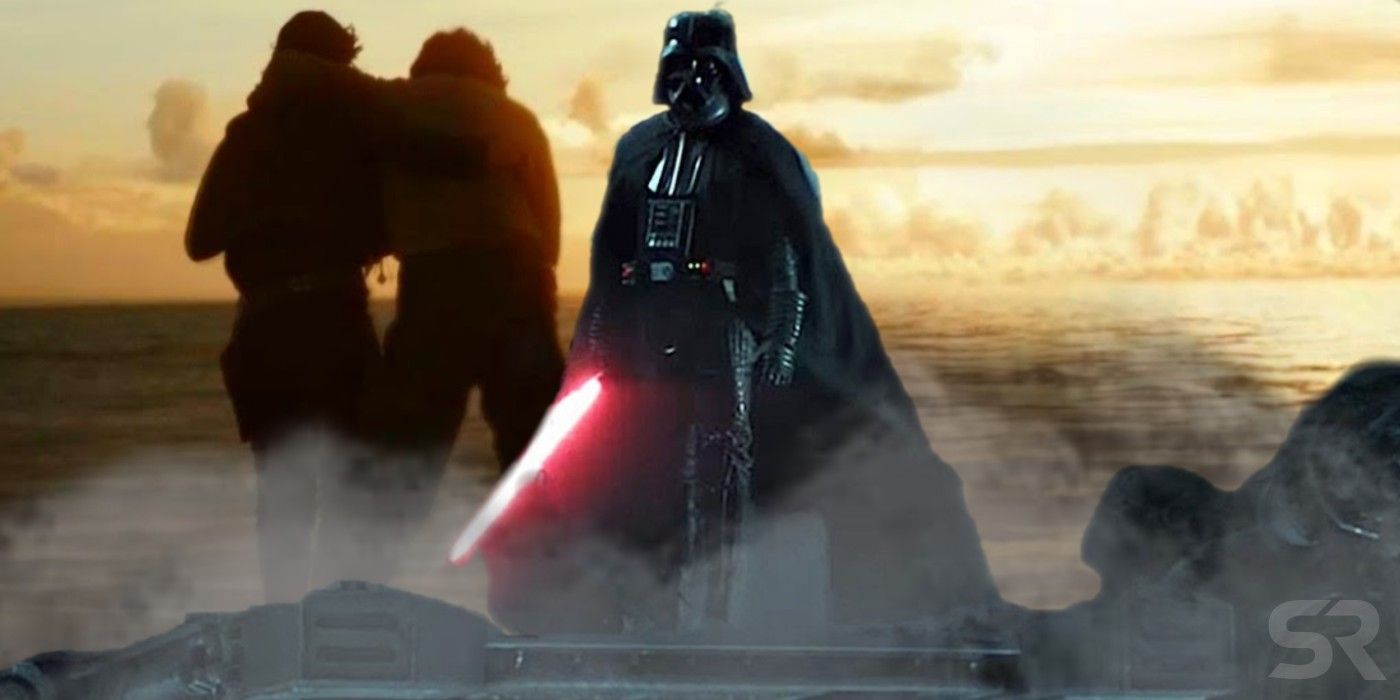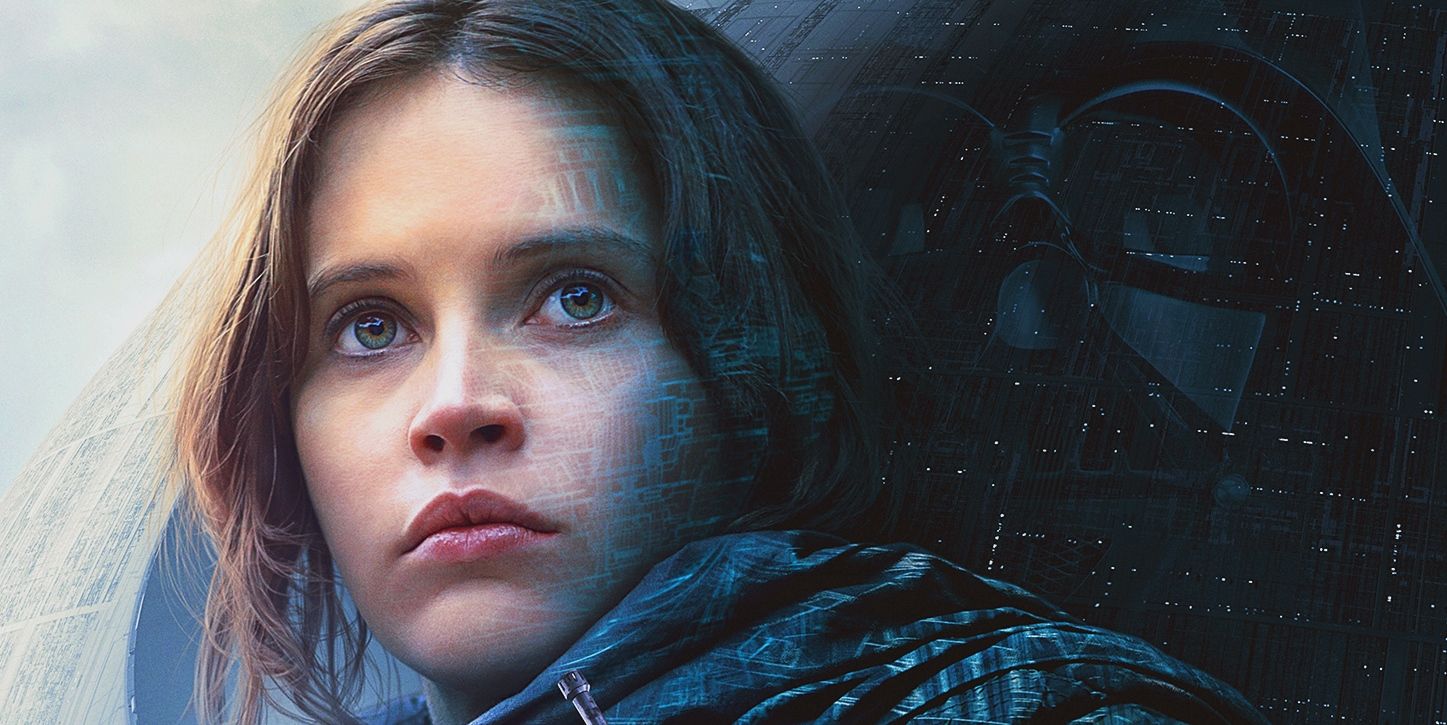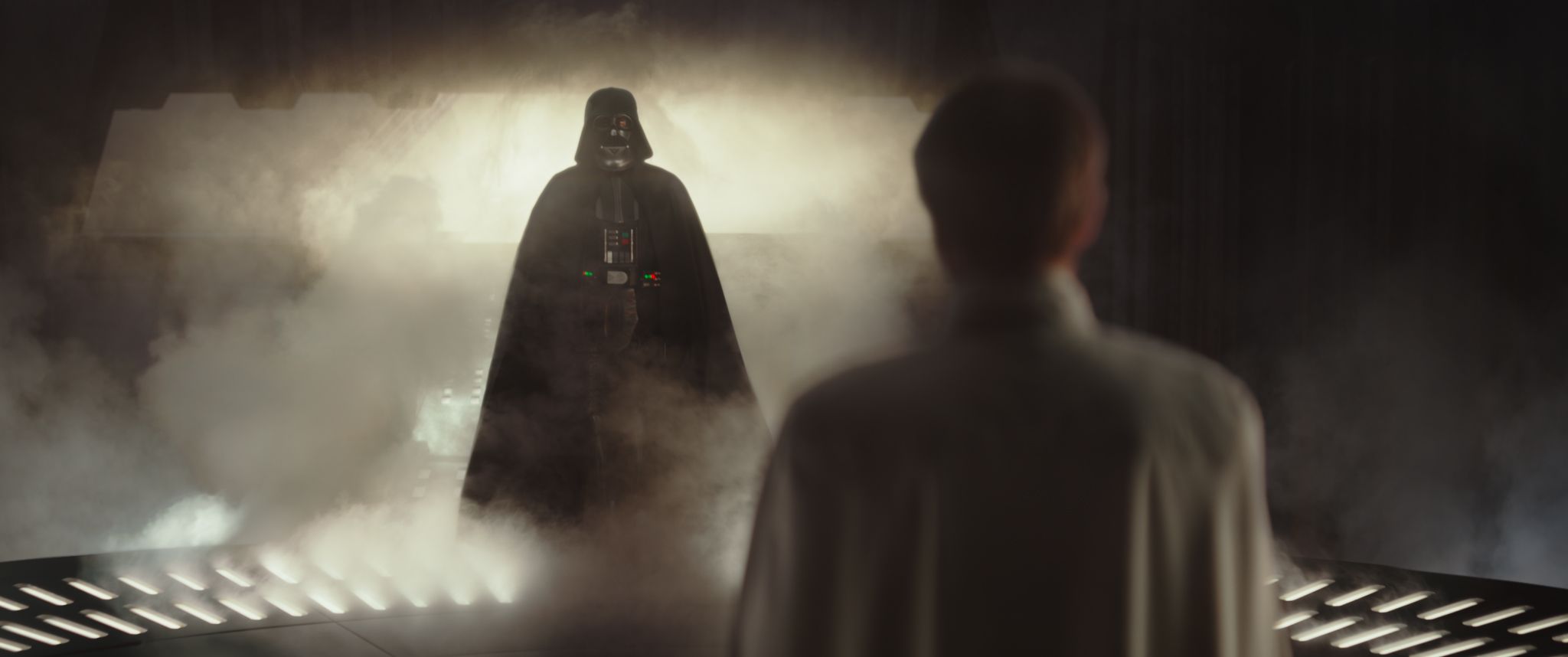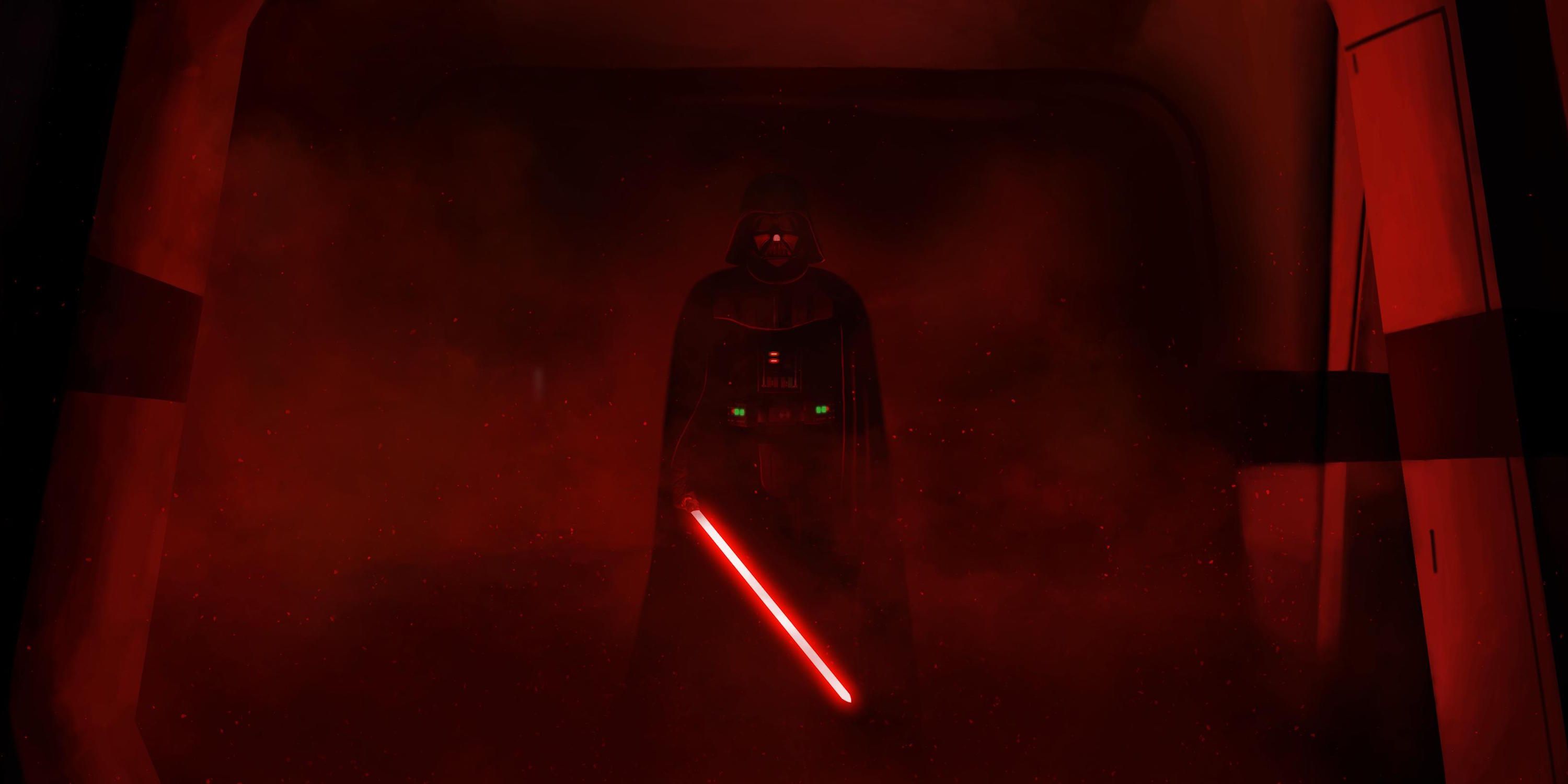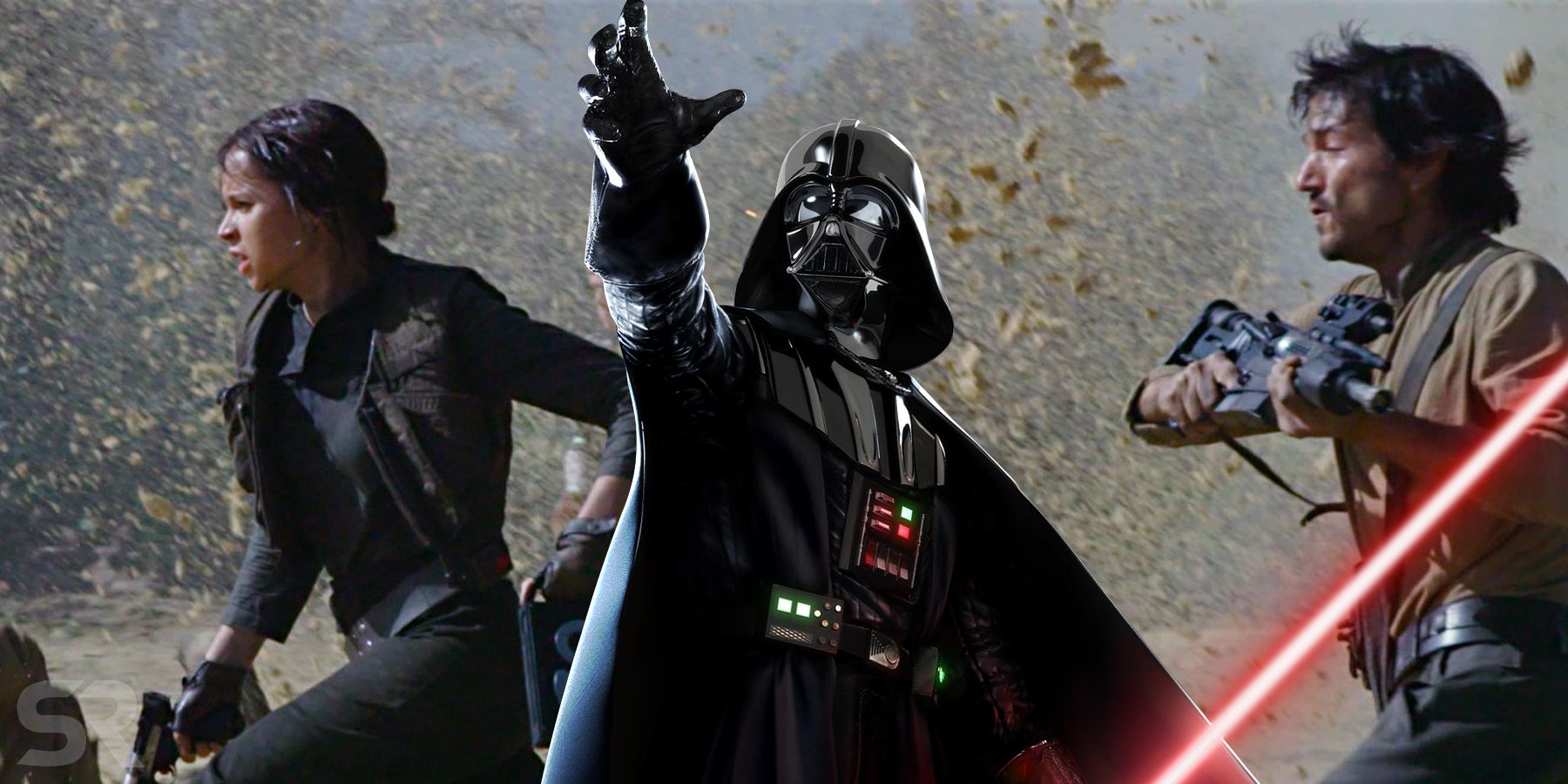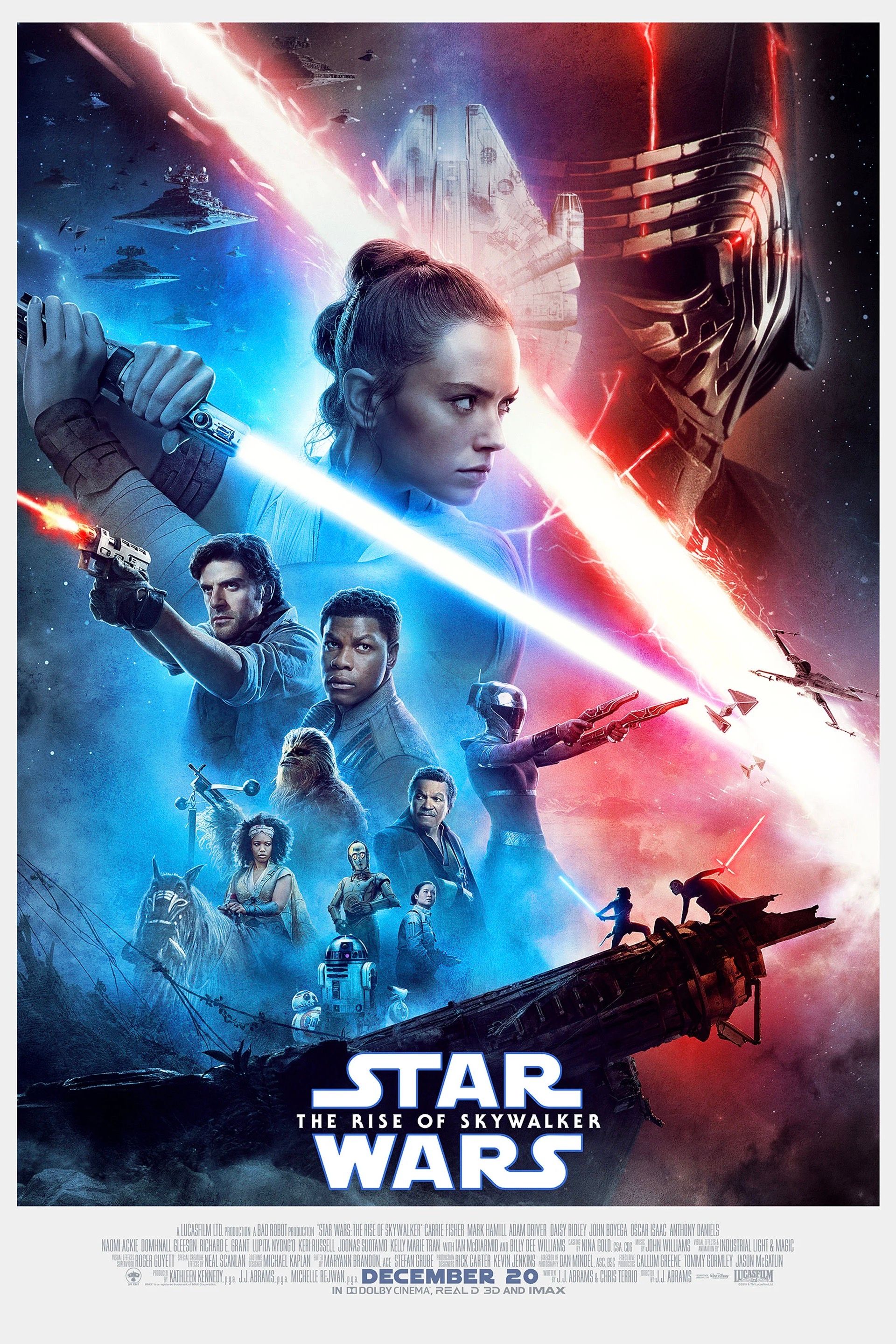Darth Vader’s hallway massacre was an exciting end to Rogue One: A Star Wars Story, but the sequence somewhat undermines the rest of the film. Eleven years since Anakin Skywalker (Hayden Christensen) fell to the dark side in Revenge of the Sith, his evil alter ego returned to the silver screen once more in a standalone adventure. However, Darth Vader was not as central to Rogue One: A Star Wars Story as he had been in previous Star Wars installments.
Rogue One: A Star Wars Story charts Jyn Erso (Felicity Jones) as she gradually warms to the Rebellion’s cause, and helps form the titular team to steal the Death Star plans. As the Rebel threat grows, so does Vader’s presence, as the Sith Lord attempts to foil their efforts. Vader is last seen directly combating Alliance soldiers aboard the flagship, and this spectacular intervention is held in high regard by Star Wars enthusiasts. Moreover, based on this depiction, fans still clamor for a Vader solo film that focuses on the Sith Lord in his prime, even though he has already been central to two Star Wars movie trilogies.
It’s unclear whether that movie will come to pass, but it’s evident that the Dark Lord will remain a hugely impactful figure on Star Wars canon as it expands. Indeed, many of the new Vader stories characterize him in a similar way to Rogue One: A Star Wars Story’s most famous scenes. But whilst Vader’s climatic massacre is a crowd-pleaser, it doesn’t quite fit in with the movie that surrounds it.
How Darth Vader Fits Into Rogue One: A Star Wars Story
Surprisingly, Darth Vader has even less screen-time in Rogue One: A Star Wars Story than the twelve minutes that he features in during A New Hope, and his scenes do not occur until deep in the film’s story. Despite being unable to save Galen Erso (Mads Mikkelsen), the Rebel attack on the Imperial facility on Eadu is worryingly successful. Thus, Director Orson Krennic (Ben Mendelsohn) is summoned to Vader’s castle on Mustafar to answer for the huge security breach, and though the Sith Lord ultimately leaves Krenic in command of the situation, Vader makes his displeasure known.
Indeed, he threatens retribution upon Krennic if the officer fails again – or continues vying for the Emperor’s affections. Ultimately, Vader isn’t responsible for Krennic’s poetic death (on the receiving end of the Death Star) but his wrath is surely felt in the Battle of Scariff. Under Vader’s command the Empire decisively destroys the Rebel fleet, but he still needs to retrieve the plans that the Rogue One team stole. Boarding the Rebel flagship, Vader slaughters the soldiers protecting the plans. Yet Vader is unable to stop them from being relayed to the Tantive IV, and he can only watch as the iconic vessel makes a hurried escape.
Related: Star Wars: 10 Secrets Hidden At Darth Vader’s Castle
From that description, Vader may have little effect upon Rogue One: A Star Wars Story’s narrative. But the fallen Jedi undoubtedly benefits from how the movie treats him, and it’s not hard to see why cinemagoers loved Rogue One: A Star Wars Story for it.
Rogue One Improves Darth Vader By Making Him Scary Again
The appeal of Darth Vader’s scenes in Rogue One: A Star Wars Story runs deeper than a combination of nifty lightsaber moves and manipulation of the Force. Indeed, to understand the acclaim of the hallway slaughter, we need to consider the movie’s timing. As mentioned earlier, the controversial Star Wars prequels were the last time Vader had been depicted onscreen, and attitudes towards him had since soured. Even a decade on, the prequels had left their mark upon the franchise, and the tragedy of Anakin Skywalker had been thoroughly critiqued. Even fans who approved of Anakin’s arc often admitted that the Prequels had demystified and de-fanged Vader somewhat by making his tragic fall slightly more sympathetic. It also didn’t help that Disney, since their acquisition of Lucasfilm in 2012, had begun to position Vader as an anti-hero more than villain.
That isn’t to say that Rogue One: A Star Wars Story ignored these recent embellishments. Certainly, the movie introduces Vader’s fortress on the planet Mustafar which, given Anakin's history with the planet, is one of the most prominent references to the prequel trilogy in recent years. But Rogue One: A Star Wars Story succeeded because it honed in on what made Vader such a potent villain in the Original Trilogy, and expanded upon it. Moreover, Rogue One starts off small and unveils Vader is a series of escalating scenes. The first glimpse of Darth Vader is in his bacta tank, which immediately foregrounds the pain and pathos of his existence. This then proceeds to images of his huge shadow, his silhouette and then his physically imposing body. Vader then sasses and Force-chokes Krennic, something which he often did with wayward officers in the Original Trilogy.
Coupled with James Earl Jones’ sonorous vocals, Vader’s atmospheric entrance reminds the audience of his intellect, his strength with the Force, and the scariness of that masked visage. So, when Rogue One: A Star Wars Story moves on to show Vader as a warrior, a strong foundation of fear is already in place. Due to the advances of film-making technology, Rogue One: A Star Wars Story was able to render Vader’s ferocity in a new and dynamic way.
With seamless CGI and shots of screaming soldiers accompanying the focused and brutal choreography, Darth Vader is depicted as a formidable and terrifyingly blunt instrument for the Empire. By emphasizing his darker qualities – and everything that made him iconic in 1977 – Vader is, all in all, treated well. But this happens in isolation from everything else at the end of Rogue One.
Vader's Hallway Massacre Adds Nothing To Rogue One's Story
As readers will know, Rogue One is a prequel to the very first Star Wars installment, A New Hope. As such, the hallway fight acts as a bridging sequence, meaning the Death Star plans end aboard the Tantive IV to kick start the events of the original film. The heavy focus on Darth Vader’s prowess also begins to reorient the audience’s focus away from the Rogue One team and back upon the dark lord himself, Princess Leia and the Skywalker saga at large.
While Vader’s massacre is successful on this front, its nevertheless damaging to the film’s larger ideas. With its diverse band of compassionate heroes fighting against a hegemonic, brutal dictatorship, Rogue One: A Star Wars Story’s subtext is clear. Furthermore, Jyn, Cassian (Diego Luna) et al may be forced to sacrifice themselves at the movie’s end, but in doing so, they generate hope for their cause. As a result, their actions both inspire, and allow, others to continue doing the same. Indeed, by using these new characters, Rogue One recontextualizes what we know about the Rebel Alliance. The Skywalker Saga has predominately focused on the struggles of the golden trio, and though it’s hinted at a galactic society teeming with life, the series had little chance to explore the people beyond these heroes. Conversely, Rogue One depicts beings, cultures and worlds being destroyed by the Empire’s fascism, and the film focused upon the inner lives of the Rebels whose names do not live on in glory like the Skywalkers or Solos.
As the Skywalker Saga draws to a close and Star Wars moves beyond that fabled family, Rogue One: A Star Wars Story’s approach outwardly complements this grander idea about how important every being is. But as Vader’s onslaught begins, the film jarringly walks back on these ideas. Indeed, Cassian and Jyn’s compatriots are sidelined once more, and they become faceless fodder for Vader’s blade. While it’s true that audiences might be more sympathetic to these troops after Rogue One: A Star Wars Story, it’s not something that they are meant to consider in that moment. We feel the soldier’s fear as Vader advances, but they have not been characterized outside their uniform. Vader is the focal point of the action, and it’s his power that we are intended to marvel at as he easily dispatches the squad, instead of aligning with the Rebels themselves.
How Vader's Onslaught In Rogue One Could Have Been Even More Meaningful
Darth Vader’s hallway scene was evidently included to please hardcore fans of both the character and the series. There is nothing inherently wrong with this; after all, most sequels and prequels are made to appeal to audiences that loved the first installment. But fan service becomes detrimental when these new additions are at odds with both the movie’s story and its makeup. It’s worse when such additions add little thematic value to the movie. Moreover, Vader’s hallway fight could be removed so that Jyn and Cassian’s sacrifice cuts directly to Princess Leia receiving the plans, and the movie’s central narrative would be unaffected – albeit less spectacular.
Yet this is a rather extreme solution, especially when fan service can improve a movie if done right. Vader’s part in Rogue One: A Star Wars Story is not egregious in itself, since such a security breach in the Empire would naturally warrant his involvement. Yet his hallway scene could have been incorporated into Rogue One: A Star Wars Story in a more organic fashion. Moreover, Rogue One's writer, Gary Whitta, revealed that he originally pitched a scene where Vader confronted a Rebels blockade on the beaches of Scarif, close to where the Rogue One crew would flee with the Death Star plans. While the cruiser’s corridor works exceptionally well as a set piece, the prospect of Vader confronting characters we have got to know over the course of Rogue One: A Star Wars Story – or the protagonists themselves – is a compelling one.
Indeed, Baze Malbus (Jiang Wen) and Chirrut Îmwe (Donnie Yen) were given heartrending send-offs, but their varying degrees of faith in the Force could have been explored that little bit more if they had survived the battle to face a mysterious yet powerful Sith Lord aboard the Rebel ship. In this way, Vader’s role in the film takes on a greater meaning since he would acts as the final element of their character arcs. Certainly, it would have been distressing to see such beloved characters die at Vader’s hand. However, by knowing more about Vader’s opponents, the audience becomes more invested in the sequence, and their deaths would similarly emphasize the ideas of hope and sacrifice that are at the core of Rogue One: A Star Wars Story.

